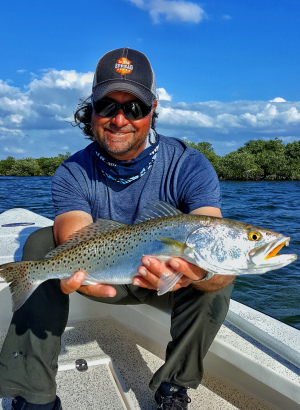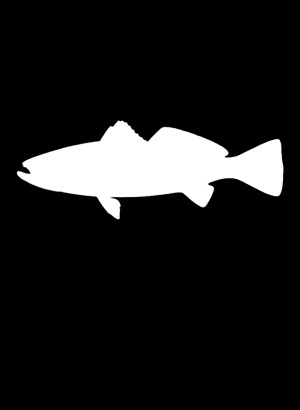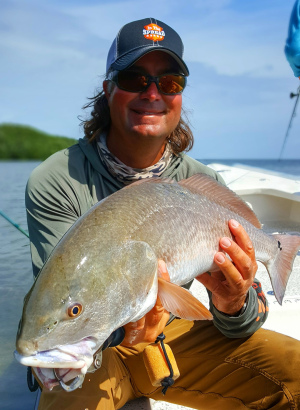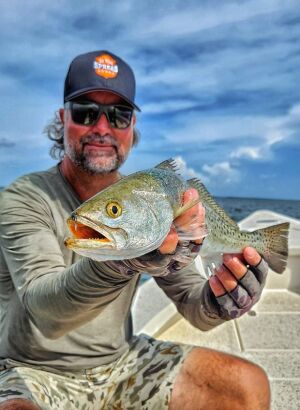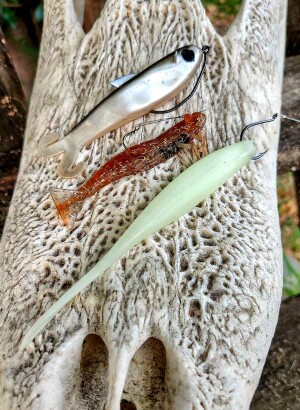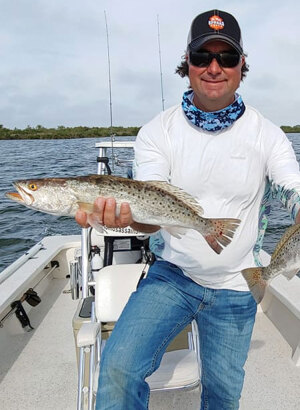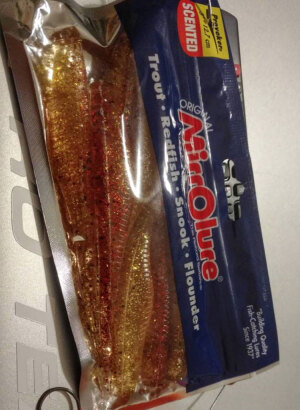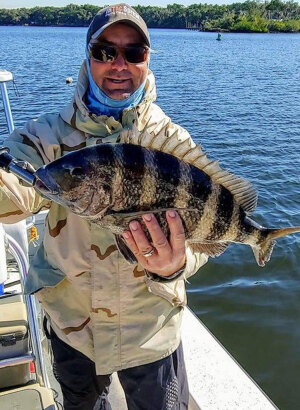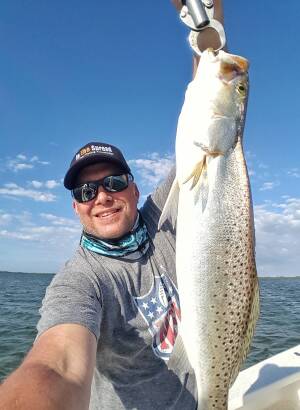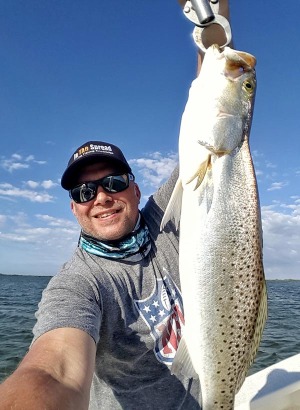Fall speckled trout fishing on Florida's Nature Coast becomes incredibly productive when you know the right approach. The 5-inch MirrOlure Provoker, rigged under a popping cork in three-foot depths during outgoing tides, consistently triggers strikes. Understanding these key techniques and optimal conditions will transform your autumn seatrout fishing success.
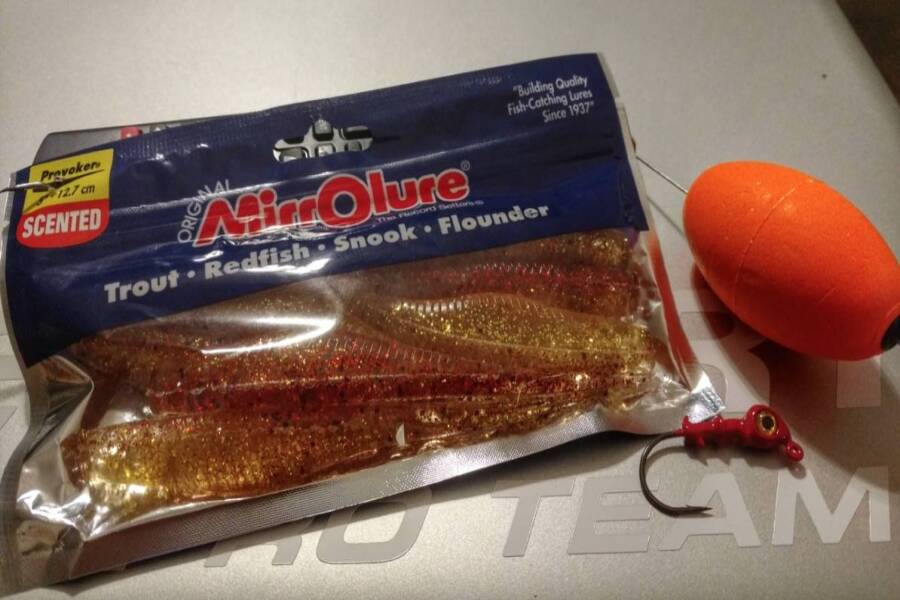
MirrOlure Provoker for Fall Speckled Trout
Key Point of Article:
- Focus: Effective use of MirrOlure Provoker for catching fall speckled trout.
- Location: Nature Coast, ideal for speckled sea trout fishing.
- Bait Details: 5" MirrOlure Provoker, scented, versatile rigging options.
- Ideal Conditions: 3-foot depth, outgoing tide, and a slight breeze.
- Top Colors: Watermelon red flake, gold body/red back, bourbon, and glow.
- Technique: Popping cork method, 20" under the cork, 1/8th red jig head.
- Tips: Long casts, good pops, and pauses, watch for strikes on the fall.
Fall on the Nature Coast brings with it a change in the air and the water, a promise of exciting days filled with saltwater trout fishing adventures. For anglers targeting the elusive speckled trout, also known as speckled sea trout or seatrout, the MirrOlure Provoker emerges as a top choice. This article delves into the effective use of this formidable bait in the pursuit of these prized fish during the autumn season.

The Nature Coast: A Speckled Trout Haven
Florida's Nature Coast stands as a quintessential destination for avid anglers, particularly those in pursuit of the elusive speckled seatrout. This region, stretching along Florida's Gulf Coast, is marked by its expansive flats and varied underwater landscapes, forming an environment that is nothing short of a paradise for saltwater trout fishing.
One of the most notable features of the Nature Coast is its sprawling flats. These shallow water areas, often only a few feet deep, provide a unique ecosystem where speckled trout thrive. These flats are teeming with life, offering abundant food sources for trout, such as small baitfish and crustaceans. This abundance of prey makes these flats a hunting ground for the speckled trout, drawing them in large numbers, especially during the fall.
The underwater terrain of the Nature Coast is diverse and rich. It is characterized by hard bottom areas, which are crucial for the ecosystem. These hard bottoms are often composed of limestone or oyster beds, providing excellent hiding and ambush spots for speckled trout. These areas are also rich in marine life, supporting a healthy and diverse food chain that directly benefits the trout population.
Another significant aspect of this region is the presence of rock grass. This vegetation offers essential cover and protection for juvenile trout and serves as an ideal spot for larger trout to ambush prey. The rock grass beds are not just beneficial for the trout; they are also vital for maintaining the health of the entire marine ecosystem in the area.
The fall season in the Nature Coast brings a magical transformation that is particularly favorable for speckled trout fishing. As water temperatures begin to cool, speckled trout become more active and feed more aggressively in preparation for the winter months. This increased activity presents an opportune time for anglers to target these fish. The cooler water also leads to clearer conditions, making it easier to spot and target trout in the flats and shallows.
Additionally, the fall migration of baitfish into the flats and backcountry waters of the Nature Coast provides a feast for speckled trout. This seasonal shift in the ecosystem dynamics attracts trout in search of easy meals, making them more susceptible to well-presented baits and lures.
In summary, Florida's Nature Coast, with its unique combination of sprawling flats, hard bottom areas, and rock grass beds, creates an ideal habitat for speckled trout, particularly during the fall season. The cooler waters, abundant food sources, and the natural structure of the terrain come together to offer an unparalleled saltwater trout fishing experience. For anglers seeking the thrill of catching speckled trout, the Nature Coast during fall is a destination that promises both challenge and reward.
MirrOlure Provoker: A Versatile Bait
The MirrOlure Provoker stands as a jewel in the crown of speckled trout fishing lures. Measuring an impressive 5 inches, this soft plastic bait has garnered a well-deserved reputation for its unparalleled effectiveness in enticing speckled trout. Its design and features cater specifically to the habits and preferences of these sought-after game fish, making it a go-to choice for seasoned anglers and novices alike.
One of the most striking features of the MirrOlure Provoker is its scented nature. Unlike many other lures that rely solely on visual appeal or movement to attract fish, the Provoker adds another layer to its allure with a scent that mimics natural prey. This scent is a powerful attractant for speckled trout, who rely heavily on their sense of smell to locate food. The scent trail left by the Provoker in the water can draw trout from a distance, piquing their interest and triggering their predatory instincts.
The physical design of the MirrOlure Provoker is another aspect of its effectiveness. Its size and shape are meticulously crafted to mimic the appearance and movement of small fish and other natural prey of the speckled trout. When retrieved, it moves through the water with a life-like action that is hard for any nearby trout to resist. The bait's realistic swimming motion, combined with its scent, creates an irresistible combination for speckled trout.
Versatility is another key attribute of the MirrOlure Provoker. It's designed to be adaptable to a variety of fishing conditions and techniques, making it a valuable tool in any angler's arsenal. For instance, it can be rigged weedless, which is ideal for fishing in areas with heavy cover, such as grass flats, where speckled trout often lurk. This setup minimizes the chances of snagging on vegetation, allowing anglers to confidently cast into areas they might otherwise avoid.
Alternatively, the Provoker can be paired with a jig head, which is effective in open water and deeper areas. This setup allows for a more aggressive, erratic action, mimicking an injured fish – an easy target for predatory trout. The added weight of the jig head also provides better control over the depth and movement of the lure, allowing for more precise targeting of the speckled trout.
Lastly, fishing the MirrOlure Provoker under a cork is a popular technique, especially in shallower waters. This method combines the visual attraction of the cork's bobbing and splashing with the scent and motion of the Provoker below. The cork acts as both a strike indicator and a way to keep the lure at the desired depth, making it a highly effective technique for targeting speckled trout in a variety of water conditions.
In conclusion, the MirrOlure Provoker's combination of size, scent, realistic movement, and versatility makes it an exceptional choice for targeting speckled trout. Its ability to be fished in multiple ways allows anglers to adapt to the conditions at hand, increasing their chances of a successful catch. Whether fishing in grassy shallows, open waters, or under a cork, the Provoker is designed to attract and catch speckled trout, making it a must-have in any saltwater angler's tackle box.
Rigging and Technique: Maximizing Success
The rigging of a lure is a critical factor in the art and science of seatrout fishing, with the popping cork setup standing out for its effectiveness and the dynamic experience it offers. This method, particularly when using the MirrOlure Provoker, combines auditory attraction with visual appeal and the innate predatory responses of the trout.
The popping cork method revolves around creating a disturbance on the water's surface, mimicking the sound and sight of prey, such as a small fish or crustacean in distress. This disturbance is generated by the 'pop' of the cork, a sound that travels underwater and grabs the attention of nearby seatrout. The cork itself serves multiple purposes: it acts as a strike indicator, a sound producer, and it maintains the bait at a strategic depth.
Rigging the MirrOlure Provoker approximately 20 inches beneath a 1/8th red jig head is a meticulously thought-out strategy. This specific length ensures that the Provoker is suspended in the water column, placing it right in the line of sight of predatory trout. The red jig head adds a touch of color, which can be particularly enticing in certain conditions, and its weight is ideal for ensuring the proper sinking rate and movement of the bait.
The technique of using a popping cork is both strategic and rhythmic. It begins with a long cast ahead of the boat, ideally placing the bait in an area where trout are likely to be feeding or passing through. After the cast, the angler engages in a series of sharp, quick tugs on the line, causing the cork to make a loud popping noise. This noise is key; it emulates the sounds of active prey and signals a potential feeding opportunity to the trout.
Following each pop, it's crucial to pause. These pauses are not just moments of inactivity; they are laden with potential. It is during these moments of stillness that the Provoker, suspended beneath the cork, becomes most vulnerable and attractive to the trout. The bait slowly sinking or fluttering down during the pause presents an irresistible target for the trout.
The moment of the strike, often occurring as the bait falls beneath the cork, is a test of the angler's skill and reflexes. It requires keen attention and a quick response. Detecting the strike promptly is essential, as seatrout can be quick to spit out a bait that doesn't feel right. The angler must be ready to set the hook firmly as soon as the trout takes the bait.
Using of a popping cork with the MirrOlure Provoker rigged beneath it is a potent combination for seatrout fishing. This method takes advantage of the trout's natural predatory instincts and their attraction to both visual cues and auditory signals. The technique's requirement for alertness and quick reflexes adds an element of excitement and skill to the fishing experience, making it a favored approach among seatrout anglers.
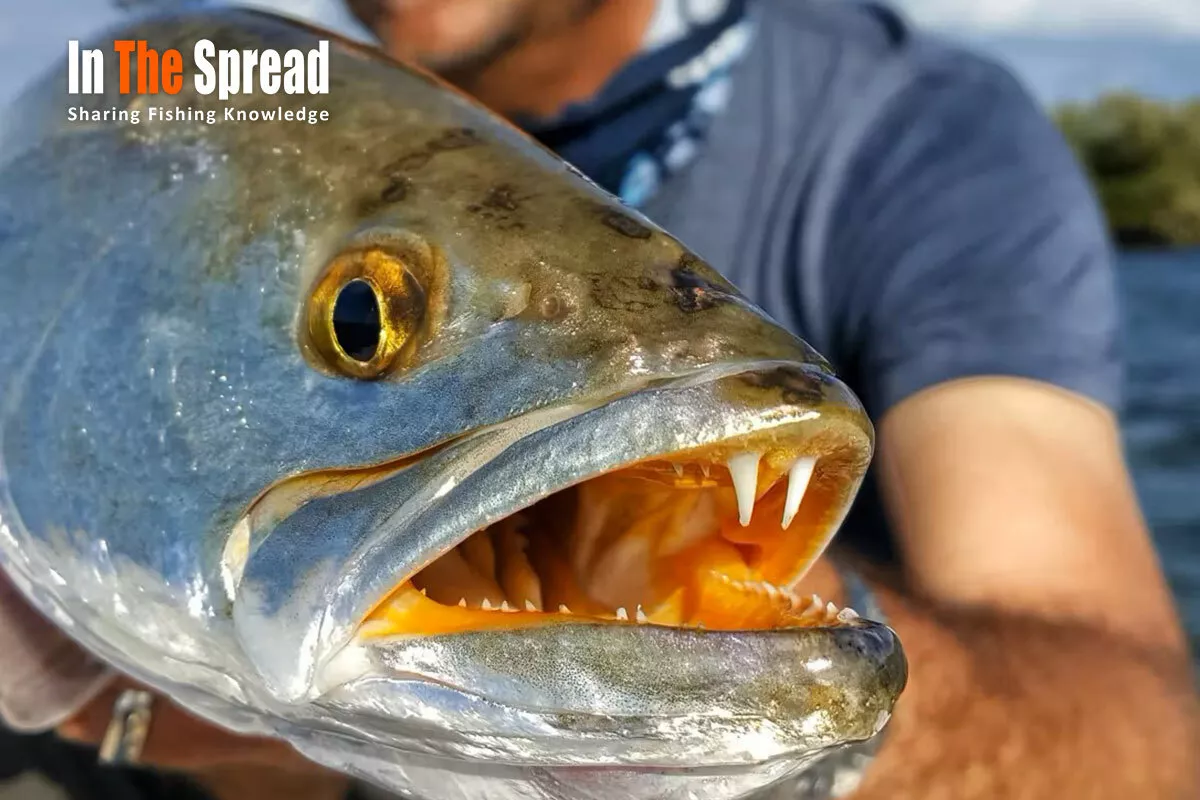
Color Choices: Adapting to Conditions
The color selection of a lure is a critical aspect of fishing, often making the difference between a successful outing and a lackluster one. The MirrOlure Provoker's range of colors offers anglers the versatility needed to adapt to the changing preferences of speckled trout, especially during the fall season.
Watermelon red flake and gold body/red back are particularly favored colors for fall fishing. The watermelon red flake, with its natural greenish hue interspersed with sparkling red flakes, mimics the appearance of small baitfish and crustaceans found in the waters during this time, making it an attractive choice for speckled trout. This color scheme is particularly effective in clear water conditions, where its naturalistic appearance can be more readily observed by the trout.
The gold body/red back Provoker is another popular choice, especially on cloudy days or in murkier waters. The gold body reflects light, creating a flicker that resembles the shiny scales of small fish, a primary food source for trout. The contrasting red back adds an additional visual trigger that can be crucial in eliciting a strike, particularly in conditions where visibility is limited.
However, the unpredictable nature of seatrout fishing necessitates versatility in color choices. Trout can be notoriously fickle, with their preferences changing based on factors like water clarity, light conditions, and the type of forage available. This is where having alternative colors like bourbon and glow becomes important.
The bourbon color, a blend of darker and lighter tones, is effective in various water conditions. It provides a silhouette that can be visible in both bright and low-light conditions, making it a good all-around choice. The glow color, which stands out in darker conditions, can be particularly effective during early mornings, late evenings, or in deeper waters where light penetration is minimal.
Moreover, the glow color can be a game-changer in overcast conditions or when fishing in waters with heavy vegetation. In such scenarios, the enhanced visibility of the glow color can attract the attention of trout that might otherwise overlook a more naturally colored bait.
Keeping a variety of colors in the tackle box allows anglers to experiment and adapt to the trout's preferences on any given day. This adaptability is crucial, as water conditions and trout behaviors can change rapidly. An angler's ability to switch colors and find the right match for the day's conditions often spells the difference between a day of plentiful catches and one of missed opportunities.
While certain colors of the MirrOlure Provoker are proven favorites, the dynamic nature of speckled trout fishing demands a flexible approach to color selection. Having a range of colors at hand, from the naturalistic watermelon red flake and gold body/red back to the more conspicuous bourbon and glow, equips anglers with the necessary tools to respond to the varying moods and preferences of speckled trout, enhancing their chances of a successful fishing experience.
Ideal Conditions for Speckled Trout Fishing
The optimal conditions for speckled trout fishing on the Nature Coast, particularly the trifecta of a three-foot depth, an outgoing tide, and a gentle breeze, create a near-ideal environment for anglers. Understanding how these elements work in tandem can significantly enhance the fishing experience and success rate.
Depth: The Sweet Spot for Speckled Trout
A depth of around three feet is often considered the sweet spot for targeting speckled trout. At this relatively shallow depth, the water warms up quickly, which is particularly advantageous during the cooler fall months. Warmer waters in these shallow areas attract various forms of marine life, including baitfish and crustaceans, which are primary food sources for speckled trout. Furthermore, this depth allows for easier visibility and access to prey, making it a preferred hunting ground for these fish. Anglers find that their lures and baits are more effective in these conditions, as they can more accurately mimic the natural prey of the trout.
Outgoing Tide: A Natural Feeding Trigger
The phase of the outgoing tide is another critical factor. During this tide, water from the estuaries and flats begins to recede back into the open sea or gulf, creating a natural movement that speckled trout use to their advantage. This receding water often carries along small fish, crustaceans, and other food particles, effectively setting a dinner table for the trout. The outgoing tide also tends to clear the water, improving visibility and making it easier for trout to spot and attack their prey. Anglers who understand the timing of the tides can position themselves strategically to take advantage of these natural feeding patterns.
Gentle Breeze: Enhancing the Fishing Environment
A gentle breeze plays a multifaceted role in creating ideal fishing conditions. Firstly, it contributes to a slight chop on the water's surface, which can help disguise the presence of the angler and their equipment, making the fish less skittish and more likely to bite. Additionally, a light breeze can aid in oxygenating the water, creating a more vibrant and healthy ecosystem. This increased oxygen level can invigorate the speckled trout, making them more active and aggressive in their feeding habits. Furthermore, a gentle breeze can aid in drift fishing, allowing anglers to cover more area and present their bait or lure to more fish.
The Synergy of Conditions
The convergence of these three elements – the shallow depth, outgoing tide, and gentle breeze – creates a synergy that significantly enhances the likelihood of a successful speckled trout fishing experience. In such conditions, trout are more active, feeding patterns are more predictable, and the environment becomes conducive to both bait presentation and the overall fishing strategy.
In conclusion, understanding and leveraging these optimal conditions can greatly increase an angler's success in catching speckled trout on the Nature Coast. Depth, tide, and wind are not just isolated factors but interconnected elements that, when aligned, provide an exceptional opportunity for productive and enjoyable trout fishing.
Conclusion: A Rewarding Experience
Fishing for speckled trout with the MirrOlure Provoker during the fall season on the Nature Coast offers both challenge and excitement. With the right techniques, bait choices, and understanding of the conditions, anglers can look forward to rewarding fishing experiences. As we always say at In The Spread, good luck and good fishing!
Captain William Toney In The Spread, Instructor

